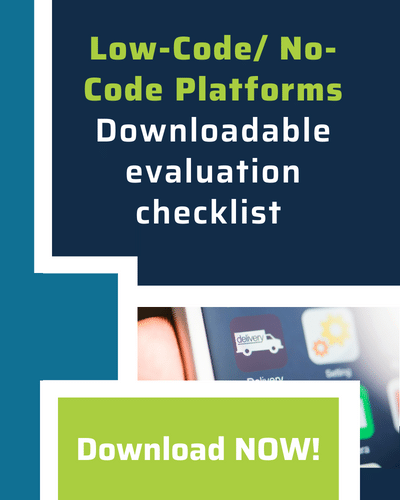At Wine Warehouse, commitment to marketing and distribution of premium beverages has always been at the forefront of what the company aims to achieve daily. However, when operating their warehouse and logistics on an SAP ERP platform, they ran into instances where they had to accomplish tasks manually because of lack of connectivity. Additionally, because of the rapidly growing nature of the beverage distribution industry, they knew they needed a solution for connectivity issues and lack of visibility into inventory and delivery processes as this was slowing down productivity.
In this blog, we’ll explain Wine Warehouse’s initial investment in SAP, the challenges they faced with connectivity issues and insight into delivery, and how Pillir’s customized application built on the EdgeReady Cloud remedied their pain points.
About Wine Warehouse
Founded in 1973, Wine Warehouse is a family owned and operated wholesale distributor of fine wine, beer, and spirits in California. Today, the company prides itself on being one of the largest distributors of alcoholic beverages in the United States with branches in Northern and Southern California. Their unique branding and category mix is a part of a nationally recognized portfolio in the premium beverage and alcohol space. Wine Warehouse continues a tradition of providing superior products to California while being supported by a team of dedicated professionals.
SAP: Combine finance, order entry, inventory management and warehouse operations
Originally, they invested in SAP in order to combine finances, order entry systems, and the management of stock, shipping, sales orders, and invoicing processes. Investment in SAP was a crucial first step to ensure that Wine Warehouse had the flexibility and capacity to meet new business challenges that come with a growing distributor network, new suppliers, and a need to collaborate and share timely information with customers.
However, Wine Warehouse ran into some challenges involving their SAP ERP platform and connectivity issues in their warehouse.
Lack of connectivity led to lack of real-time visibility into inventory
When initially investing in SAP, Wine Warehouse gained the ability to streamline large areas of their business operations, specifically accessing accurate and timely finance and customer information, along with enhanced order-to-cash processes, greater fulfillment percentages, and more accurate invoicing and stock control. Even so, because of the nature of the parts of their business processes and having large warehouses with lack of connectivity and driver routes all over California, there were still parts of their processes that were paper-driven and manual. These paper-driven and manual processes included warehouse processes that lead to outbound deliveries to customers, inbound deliveries from vendors, goods movement processes and also the keg return process executed by their drivers.
Because of this, there was no real time insight into inventory which limited the amount of product they could both get out the door as well as take in, due to the amount of time it took to manually track everything. As an example, Wine Warehouse would print physical bin locations of products out of SAP, then bring that paper to the warehouses to distribute to pickers in order for them to know where to get materials for their delivery process or where to put their materials for stocking prior to delivery. These processes were not conducive to productivity for Wine Warehouse and drained them of both time and money.
Wine Warehouse was also facing an issue regarding their keg return and receipt process. As a reward for returning empty kegs, they give their clientele financial credit. This exchange is tracked in SAP. However, because these deliveries occurred in locations with no connectivity, such as basements, this was oftentimes a paper process. This not only forced delay on accurate keg delivery but also delayed customers receiving financial credit.
As a summary, Wine Warehouse faced the following business challenges:
- Lengthy manual paper process for material tracking before customer delivery and following vendor delivery in warehouses; paper process used for keg receipt process
- Lack of real-time visibility into company’s core assets and inventory.
|
"We streamlined our operations across finance, order entry, as well as how we manage stock, shipping, sales orders and our invoicing process. Extending SAP to our warehouse and enabling some of our edge use cases with digital services was the logical next step. With a lean IT organization and atypical application requirements for in warehouse and in delivery truck scenarios, the Pillir team helped us modernize our outbound deliveries to customers, inbound deliveries from vendors, our good movements process and our keg receipts process. "
|
So, how did Pillir help Wine Warehouse solve these challenges?
Low-Code Solution Modernized Wine Warehouse & Inventory Management
To remedy the challenges involving manual processes and connectivity issues that Wine Warehouse was experiencing, Pillir designed and built a customized application that was accessible online and offline. Hosted on the EdgeReady Cloud, a low code rapid application development platform, the application is user-centric and tightly integrates to SAP. This allows Wine Warehouse to integrate the application with their current SAP ERP platform. Additionally, it allows users to track assets in real time, in weeks instead of months.
The customized application was deployed quickly and with little-to-no programming, making the process that much more streamlined and did not require infrastructure or operational overhead from Wine Warehouse. This not only gave them time back to work on other areas of their business, but assured seamless digitization of their once manual processes.
With the efficient and streamlined processes that came with a customized application, Pillir also made sure that Wine Warehouse had more visibility and improved reporting capabilities into SAP along with connectivity no matter the location. This vastly improved and sped up the delivery and keg receipt process, which was previously paper-driven. The efficient processes also improved customer satisfaction, allowing them to immediately gain financial credit for a returned keg.
To recap, below is an overview of the benefits Pillir provides Wine Warehouse:
- Streamlined and Efficient Business Processes: With applications hosted on the EdgeReady Cloud, Wine Warehouse’s previously manual and paper-driven processes are completely automated and digitized. This increases productivity without a reliance on network connectivity and gives them real-time updates into SAP with improved reporting and visibility. Delivery and keg receipt processes are completely streamlined and prompt, improving customer satisfaction.
- Quick Deployment with Little-to-No Programming: Rapid deployment with no infrastructure investments or people overhead for operational costs was required, saving Wine Warehouse time and money.
- Ensuring Best Practices: With Pillir’s solution, Wine Warehouse’s SAP ERP platform was maintained as the core system of record and kept as standard and close to best practices for existing processes as possible – while still having customized user-centric experiences for edge use cases and processes.
Interested in learning more about Pillir’s rapid application development platform? Modernize your SAP systems with the EdgeReady Cloud. Build unlimited apps for free today - Contact our team to learn more.





 Back
Back/Logo%20-%20black%20text%20blue%20pillar%20(large)-1.jpg)

